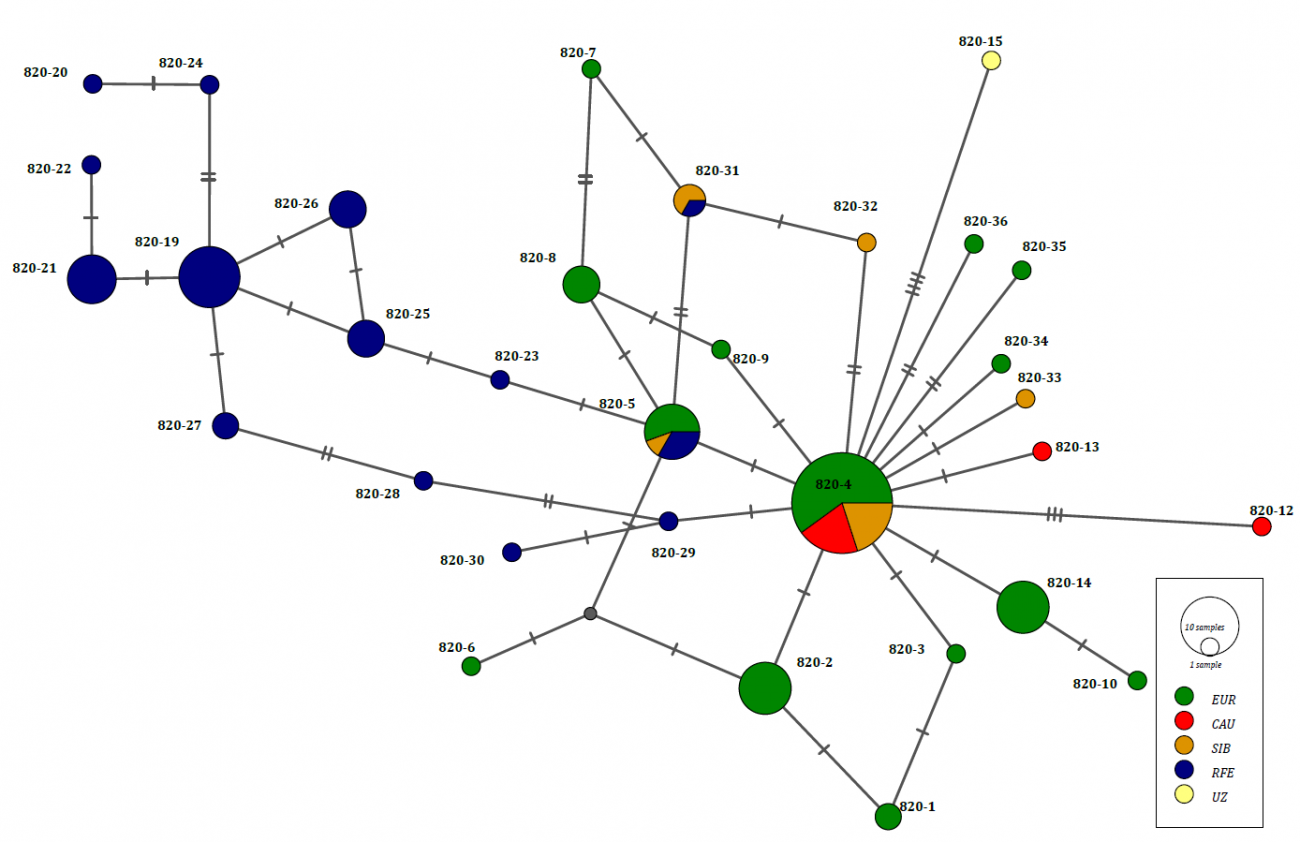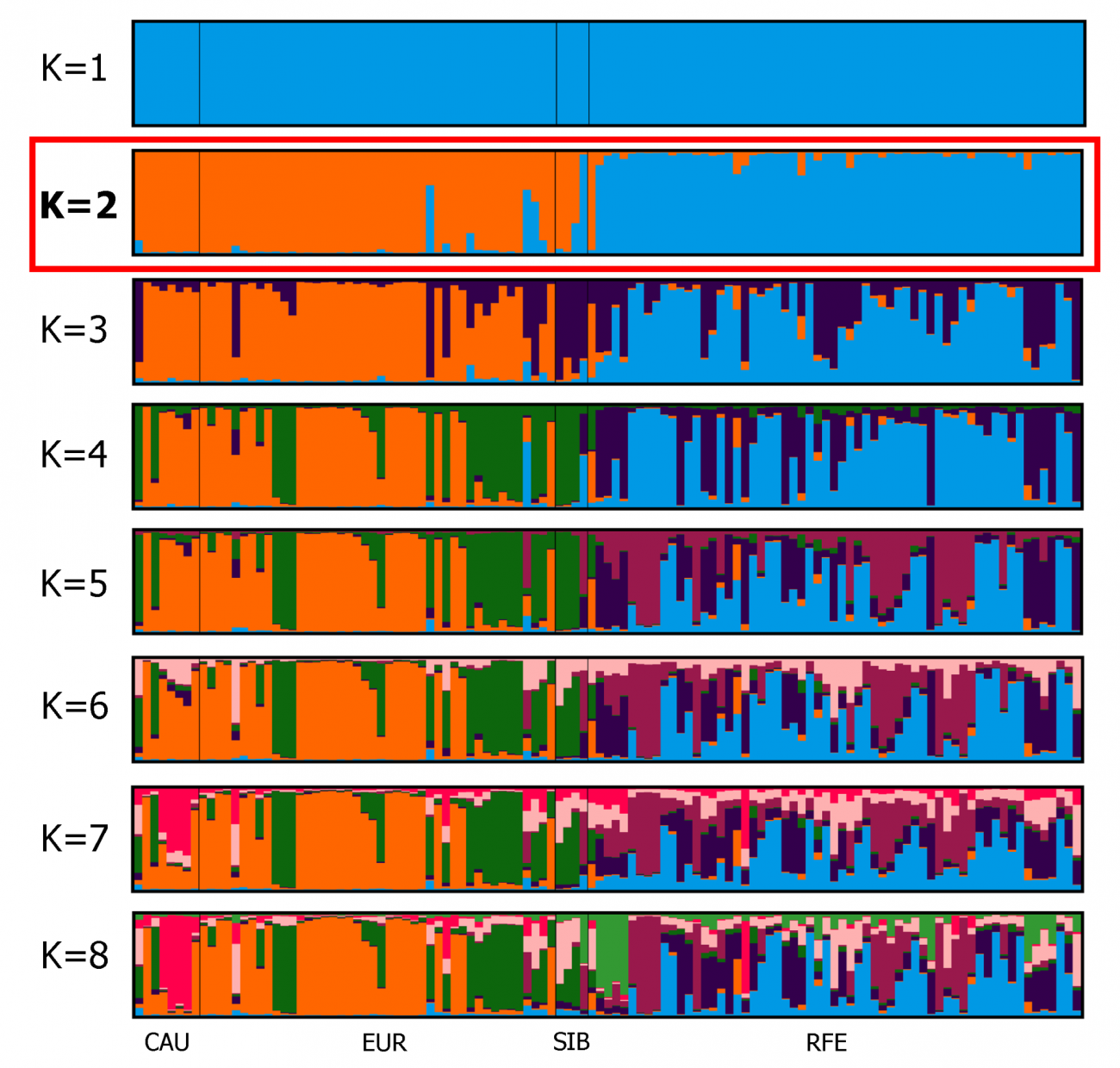
The nominative subspecies of the otter (Lutra lutra lutra) is widespread from Western Europe to the Russian Far East, the Caucasian subspecies (L.l. meridionalis) lives in the North Caucasus, Transcaucasia up to the north of Iran.
A team of authors from Russia, Armenia and Kazakhstan compared the genetic diversity of two subspecies of river otters from Russia and Armenia using a fragment of mtDNA (820 bp) and 20 autosomal microsatellite loci. The study was attended by employees of the A.N. Severtsov Institute of Ecology and Evolution of the Russian Academy of Sciences (IEE RAS): Nadezhda Sokolova, Pavel Sorokin, Jose Antonio Hernandez-Blanco.

The study described 32 haplotypes, of which 17 were new for this species. The median mtDNA haplotype network was predominantly stellate with a separate branch of haplotypes of the otter from the Russian Far East (Figure 1). The highest haplotype and nucleotide diversity was found in Far Eastern otters, and the lowest in Caucasian otters.
Analysis of mitochondrial DNA and microsatellite loci also showed that Far Eastern otters are more genetically differentiated compared to otters from the European part of Russia, Siberia, and Armenia (Figure 2).

The obtained results indicate that Caucasian otters are similar to otters from the European part of Russia, while otters from the Russian Far East are genetically differentiated, have a higher genetic diversity, and probably belong to a separate genetic lineage.
The study was carried out within the framework of the grant of the Russian Science Foundation №23-24-00411
The work was published in the journal: Sokolova, N. A., Oleynikov, A. Y., Korablev, N. P., Korablev, P. N., Kaloyan, G. A., Gyonjyan, A. A., Korolev, A. N., Hernandez-Blanco, J. A., & Sorokin, P. A. (2024). Genetic Structure and Diversity of Eurasian Otter (Lutra lutra) in Northern Eurasia and Caucasus: Are There Any Differences Between the Two Subspecies? Diversity, 16(12), 764.
